When Max Verstappen arrived at the Marina Bay Street Circuit this weekend, the stakes couldn’t have been higher – a 69‑point gap to leader Oscar Piastri with only seven races left, and a freshly‑re‑shaped track that could turn the championship on its head.
The 2025 Singapore Grand Prix, the 18th round of the Formula 1 season, debuted a series of circuit tweaks and a higher pit‑lane speed limit announced by the Fédération Internationale de l'Automobile (FIA). New asphalt now runs from turns 2‑3, 6‑9 and 14‑19, while minor patches cover turns 5, 6, 13 and 14. In short, the street surface is smoother, but it still demands drivers shed up to three kilograms of body weight as the humid night race unfolds.
Circuit Changes and What They Mean for the Cars
Track‑side crews spent weeks repaving the Marina Bay layout, a move intended to reduce the notorious bump‑induced chatter that often scares off the rear wing. The resurfacing between turns 6 and 9, a high‑speed section that feeds into the famous "Singapore Sling" at turn 7, should give teams a cleaner aerodynamic baseline. However, the fresh tar will need "rubbering in" during practice – a process where tyre heat deposits grip the surface. Teams that nail that early‑session work will likely enjoy better tyre life later in the race.
George Russell, who spent his morning in the pit lane, noted, "The higher pit‑lane speed limit makes the entry feel less like a choke point and more like a flow. Combine that with the new grip, and you’ll see a different rhythm to the pit‑stop strategy." The FIA confirmed that the pit‑lane surface itself has been upgraded, separating the working lane from the fast lane with fresh concrete, which should lessen the chance of wheel‑scrub incidents.
Qualifying Drama: Penalties, Surprises and Rookie Highlights
The qualifying session was a roller‑coaster. Mercedes rookie Kimi Antonelli vaulted to fourth on the grid, an impressive feat that underscores his rapid adaptation to the night‑time conditions. Lewis Hamilton, the lead driver for Ferrari, qualified sixth, with teammate Charles Leclerc a single spot behind.
Disaster struck the Williams garage when both Carlos Sainz and Alex Albon were disqualified for rear‑wing non‑compliance. Sainz will line up at the back of the grid, while Albon is forced to start from the pit lane after a last‑minute set‑up change. Alpine’s Pierre Gasly also faces a pit‑lane start after his team swapped the floor of his A525 to a different specification, a strategic gamble aimed at catching the slipstream on the new surface.
McLaren’s duo of Oscar Piastri and Lando Norris were split across the grid – Piastri eighth, Norris twelfth – a result that fuels speculation about internal dynamics as they chase the Constructors' title. Meanwhile, Red Bull Racing unveiled a bold front‑wing upgrade, borrowing clues from rival concepts to sharpen high‑down‑force balance. The design is aimed squarely at helping Verstappen finally claim a Singapore win.
Championship Implications: Verstappen’s Quest and the Piastri‑Norris Factor
With only seven races remaining, Verstappen’s 69‑point deficit translates to a mathematically narrow path: he must outscore Piastri by an average of ten points per round. The Red Bull upgrades could be the catalyst, but the night‑time humidity and the bumpy street surface are equal‑iseres that tend to reward consistency over outright speed.
"Singapore is where the margins are razor‑thin," said Red Bull’s technical director, Pierre Wambst. "If we can get the tyre degradation under control, Verstappen can chip away at the lead even without a win." Piastri, meanwhile, remains confident. "The car feels solid on the new asphalt, and we’ve already shown pace in qualifying. The race will be a test of strategy and stamina," he told reporters at the paddock.
McLaren’s internal story adds another layer. Team principal Andrea Stella hinted at “healthy competition” between Piastri and Norris, but also warned that “any friction could cost us precious points.” With both drivers capable of podium finishes, the Constructors' race could swing either way based on how well the team manages tyre wear on the refreshed track.

Team Strategies: Pit Stops, Tyre Choices, and the New Speed Limit
The elevated pit‑lane speed limit – now 80 km/h versus the previous 70 km/h – shortens pit‑stop windows by roughly two seconds. That may encourage teams to opt for an extra stop, especially if the new grip lets drivers preserve tyre life longer. Mercedes, who struggled with tyre overheating in the previous Singapore race, plan a two‑stop strategy, hoping the smoother surface will keep the tyre temperatures in the optimal window.
Red Bull, on the other hand, appears to be targeting a three‑stop plan, leveraging the front‑wing upgrade to maintain higher down‑force through the slower sectors. The goal: extract every tenth of a second without sacrificing fuel load, a classic Verstappen‑style gamble.
Ferrari’s approach is more conservative. "We’ve seen the asphalt change, and we’ll stick with a one‑stop if the data holds," said Ferrari’s performance chief, Enrico Furlan. The team hopes the reduced pit‑lane speed won’t penalise them too much, relying instead on straight‑line speed on the main straight.
What Fans Can Expect: Night‑Time Drama and the Human Element
The Singapore race is famed for its neon‑lit backdrop, but the real spectacle is the physical toll. Drivers often lose up to three kilograms of body weight as the tropical heat saps them dry. That weight loss can alter the car’s balance, making the last ten laps a battle of endurance as much as speed.
Expect a tighter pack near the start, given the higher pit lane speed and the new grip. However, as the race progresses and rubber builds up on the fresh tarmac, the field may spread out, rewarding those with the best tyre‑management strategy. If Verstappen can stay on the lead lap and avoid the typical mid‑race traffic bottleneck at Turn 12, he could claw back a significant chunk of the points.
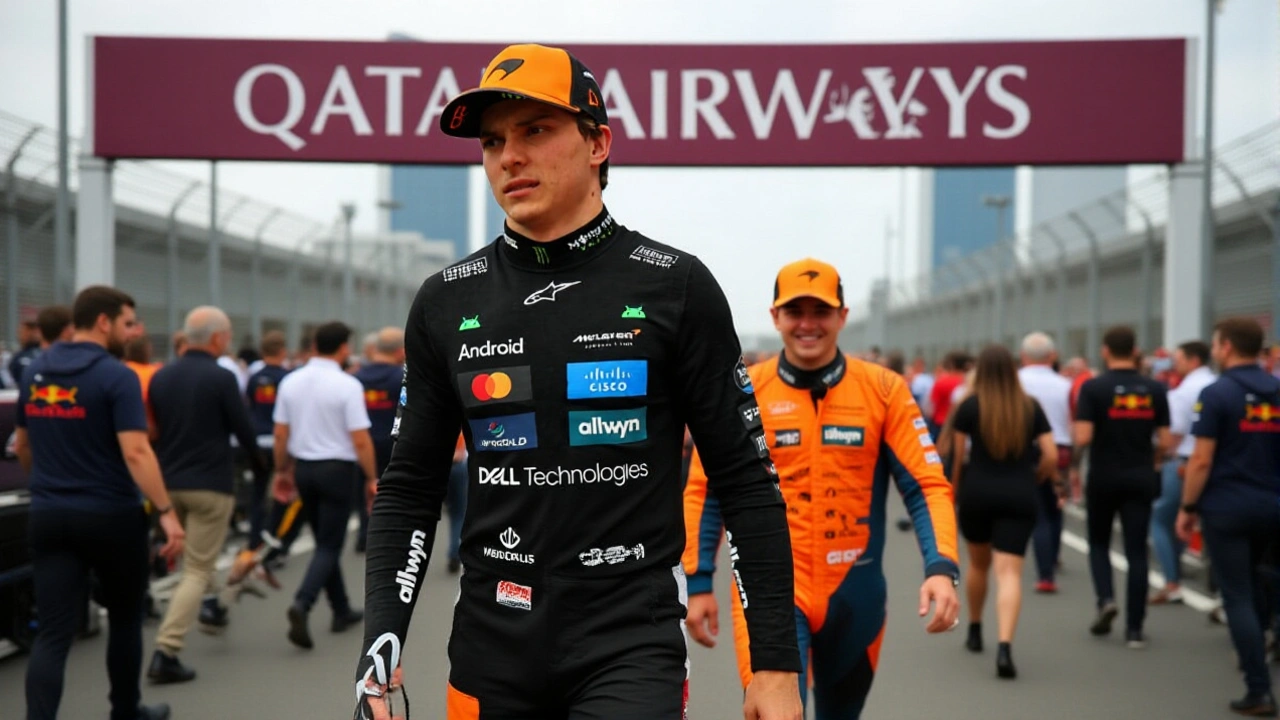
Looking Ahead: The Road to Abu Dhabi
After Singapore, the calendar rolls into Japan, Qatar, United States, Mexico, Brazil and the season‑ending showdown in Abu Dhabi. Each venue offers its own set of challenges, but the data gathered on the revamped Marina Bay surface will likely inform Red Bull’s upgrade roadmap for the remaining races.
For now, the championship narrative pivots on whether Verstappen can convert the new aerodynamic package into points, and if Piastri can defend his lead while navigating the internal dynamics at McLaren. The night‑time glow of Singapore will illuminate not just the city skyline, but also the fate of the 2025 title chase.
Frequently Asked Questions
How does the new pit‑lane speed limit affect Verstappen’s title chances?
The higher limit trims pit‑stop time by about two seconds, letting teams consider an extra stop without losing as much track position. For Verstappen, that means a three‑stop strategy could be viable, giving him more opportunities to undercut rivals and recover points, which is vital given his 69‑point deficit.
Why were Williams drivers penalised, and what impact will that have on the race?
Both drivers were found to have rear‑wing elements that did not match the homologated dimensions, breaching FIA technical regulations. Sainz must start from the back, while Albon will join from the pit lane after a set‑up change. Their penalties effectively remove them from any realistic points contention, widening the gap between the front‑running teams.
Will the new asphalt change tyre performance compared to previous years?
Yes. Fresh tarmac offers less abrasive grip, allowing tyres to stay in the optimal temperature window longer. However, drivers need a practice‑session "rubber‑in" period for the surface to gain maximum grip. Teams that nail the tyre‑warm‑up will likely see fewer pit stops and better overall race pace.
How could McLaren’s internal dynamics influence the Constructors' championship?
If Piastri and Norris start competing for the top spot rather than cooperating, strategic decisions – such as tyre choice or pit timing – could split the team’s effort. A harmonious approach could net both drivers steady points, whereas rivalry might lead to on‑track battles that cost valuable seconds and potentially a podium finish.
What should fans expect from the night‑time conditions in Singapore?
The humidity and temperature drop after sunset create a physically demanding environment. Drivers often lose up to three kilograms during the race, affecting car balance. Expect tighter early laps as grip builds, followed by a spread as the asphalt rubber‑ins and tyre wear become decisive in the final stint.

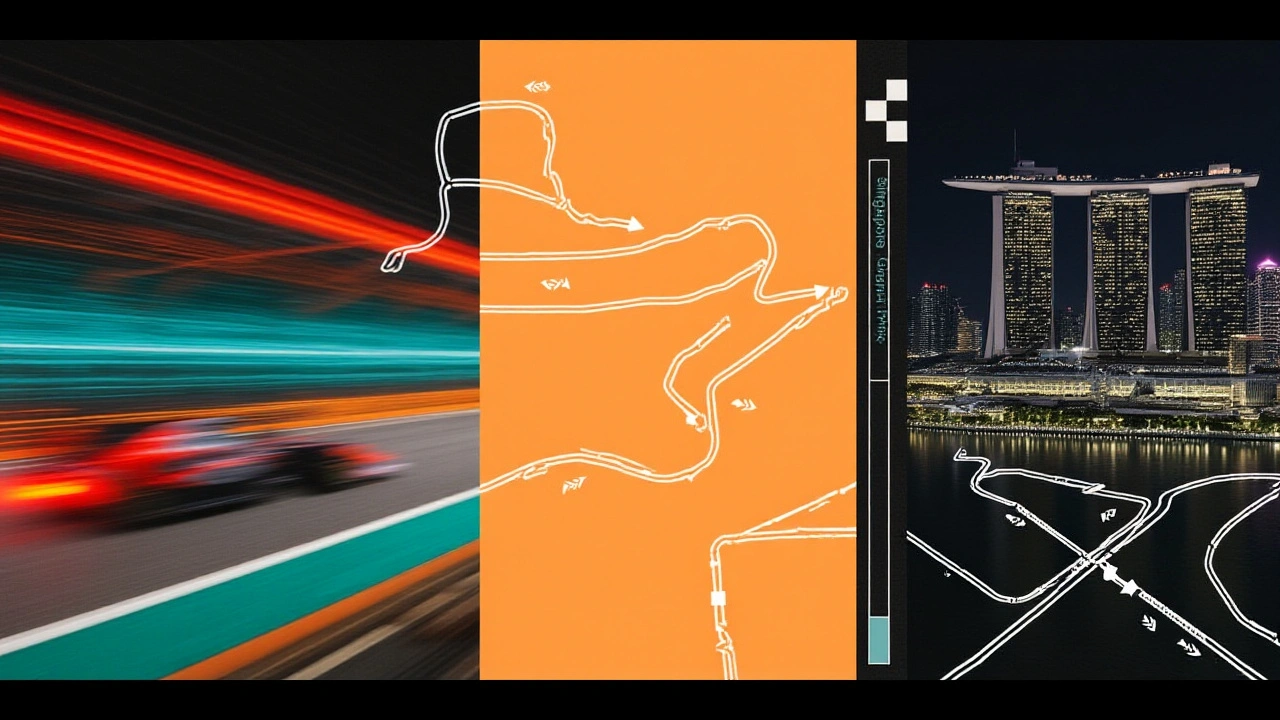

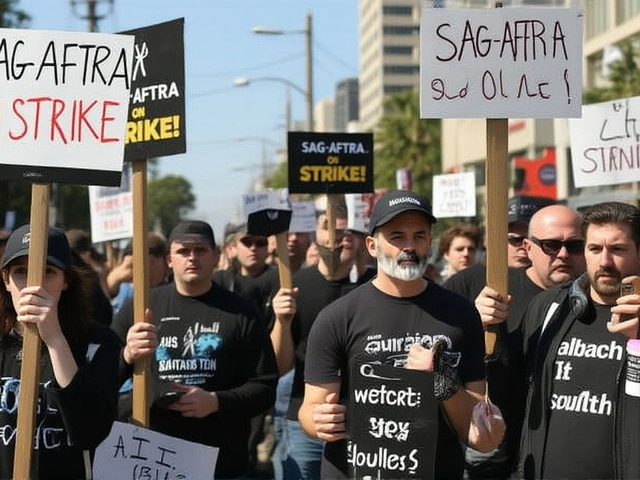
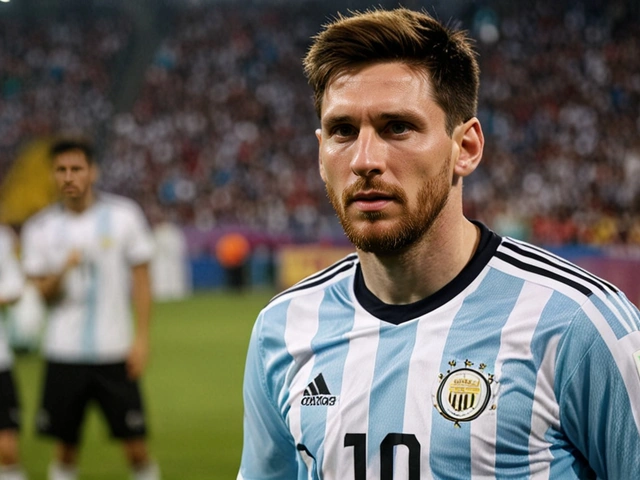
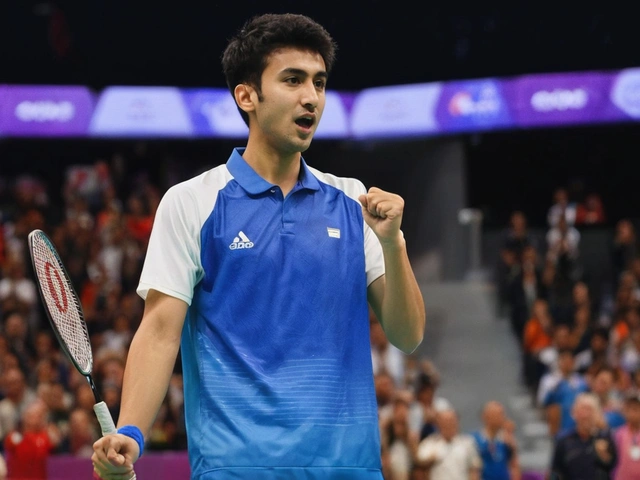
So the FIA finally decided to slap some fresh tar on the Marina Bay bends – turns 2‑3, 6‑9 and 14‑19 now feel like a brand‑new runway for the aero‑hungry monsters. The higher pit‑lane speed limit is a nice touch; it’ll shave a couple of seconds off the ingress, which for Red Bull means they can keep the delta‑budget low and maybe squeeze an extra lap out of the tyre degradation curve. Teams that master the rubber‑in window will basically get a one‑track advantage, because the old bumpy sections used to act like a natural filter for the under‑developed chassis. In short, if your engineers can translate the smoother surface into a consistent load‑point, you’ll be looking at a tighter tyre‑life envelope and a potential three‑stop gamble for Verstappen. Otherwise you’re just swapping one set of headaches for another, and that’s a 2025‑era problem we’ve all seen before.
What strikes me is the way the championship narrative becomes a study in marginal gains – each centimetre of asphalt a new variable in a high‑dimensional optimisation problem. Verstappen’s deficit feels less like a deficit and more like a constraint that reshapes the feasible region for Red Bull’s strategy matrix. If they can align the new front‑wing geometry with the tyre‑thermal envelope, the points gap can collapse faster than a pit‑stop under the new speed limit. Conversely, Piastri’s solid baseline car could exploit the reduced vibration to maintain tyre consistency, effectively turning the track’s smoothness into a defensive asset. It’s a classic game‑theory scenario where both players adjust their mixed strategies in real‑time, and the outcome will hinge on who can better calibrate their feedback loops under the neon lights.
Wow, that was a solid rundown! The new asphalt really does give the cars a more predictable grip zone, which should help even the newer drivers like Antonelli get a feel for the track faster. Just remember, tyre management is still king, so don’t get too comfy on the fresh surface – the rubber‑in period can be a real curveball. Keep an eye on the pit‑lane speed changes too; they’ll shave off a couple of seconds that can add up over a race. Good luck to everyone, and definetly enjoy the neon lights!
The FIA’s decision to raise the pit‑lane speed limit from 70 km/h to 80 km/h effectively reduces the static time loss per stop by roughly two seconds, assuming drivers can maintain optimal braking points. Coupled with the resurfaced sections between turns 6‑9 and 14‑19, teams now have a broader operating window for tyre temperature management. Red Bull’s new front‑wing package aims to maximize downforce without sacrificing straight‑line speed, which could make a three‑stop strategy viable despite the higher fuel load early in the stint. Conversely, Ferrari’s conservative one‑stop plan banks on the car’s aerodynamic efficiency on the main straight. In practice, the race will likely be decided by which outfit can translate these technical changes into consistent lap times over the 61‑lap distance.
Let’s hope the new grip gives us some epic overtakes!
Honestly, the whole track revamp feels like a gimmick… the FIA is just trying to keep the fans entertained, but the real issue is the ridiculous pit‑lane speed increase-who even needs that? It’s just another way to make the race unpredictable for the sake of drama!!!
New asphalt means smoother rides but also resets tyre‑temperature curves the data shows a tighter spread in lap times early then divergence as rubber builds up
Everything looks promising, the fresh surface should let the drivers show their true speed and we might see some great battles under the lights.
From an analytical perspective, the modifications to Marina Bay constitute a substantial alteration of the circuit’s intrinsic dynamics, albeit the execution appears somewhat inconsistent. While the raised pit‑lane velocity is a calculated enhancement, its practical implications may be overestimated, considering the inherent latency in driver adaptation. Nevertheless, the strategic ramifications for Red Bull and its rivals merit close examination, particularly with respect to tyre degradation curves and aerodynamic balance. In sum, the revision offers both opportunity and challenge, albeit executed with a degree of roughness that could have been smoothed out.
The new track layout is absolutely thrilling 🚀✨! Fresh asphalt, higher pit‑lane speed – it’s like the race just got a turbo boost. Can’t wait to see Verstappen push the limits 🏎️💨.
We got a fresh surface and a faster pit lane which means teams will play with more stops and drivers will have to manage tire wear better that could change the whole race strategy and maybe we’ll see some surprising results if Red Bull nails the new front wing
Looking at the data from practice sessions, it seems the rubber‑in period is shorter than expected, which could level the playing field for the midfield teams. If McLaren can keep Norris and Piastri on the same tyre strategy, they might avoid internal battles and maximize points. It will be interesting to watch how the pit‑lane speed change affects undercut opportunities.
The Singapore Grand Prix, reborn under a freshly laid tarmac, stands as a testament to the United States’ unrelenting pursuit of automotive excellence, a pursuit that, frankly, eclipses the modest ambitions of many other nations. The elevated pit‑lane speed limit, now at a respectable 80 km/h, is not merely a regulatory tweak but a strategic masterstroke that underscores the sophistication of contemporary motorsport engineering. Red Bull’s aggressive front‑wing overhaul, borrowing the most avant‑garde aerodynamic principles, exemplifies a commitment to pushing the boundaries of performance that only a truly competitive program can sustain. Meanwhile, the meticulous resurfacing of turns 6‑9 and 14‑19 eliminates the antiquated bumps that once served as an excuse for sub‑par performances, thereby demanding a higher level of driver skill and team coordination. From a technical standpoint, the new asphalt offers reduced abrasive characteristics, allowing tyre compounds to operate closer to their optimal temperature windows for longer stints, a factor that will undeniably favor teams with superior tyre‑management algorithms. The increased pit‑lane velocity further compresses the time lost during stops, effectively reshaping pit‑stop strategy calculus and granting an edge to crews that can execute flawless three‑stop sequences. It is precisely this kind of meticulous attention to detail that separates genuine contenders from mere pretenders. As for the championship narrative, Max Verstappen’s 69‑point deficit, while numerically daunting, becomes a merely statistical footnote when juxtaposed against the relentless pace of engineering innovation championed by the Red Bull factory. Should they successfully synchronize the new aerodynamic package with the smoother surface, the points differential could evaporate with alarming alacrity. Conversely, Oscar Piastri’s solid baseline may prove insufficient in the face of such relentless progress, especially if his team cannot match the United States’ benchmark for rapid development cycles. The strategic implications of a three‑stop plan also reverberate through the championship, as each additional stop introduces a new variable in fuel load and tyre degradation that teams must model with precision. Moreover, the neon‑lit backdrop of Marina Bay offers a unique psychological arena, where driver concentration is tested by both visual stimulus and ambient heat, further differentiating those with superior physical conditioning. Finally, the FIA’s willingness to adapt regulations in response to technological progress demonstrates a forward‑looking governance that aligns with the United States’ own tradition of innovation and leadership in the automotive sector. In conclusion, the confluence of a refined circuit, an aggressive technical upgrade, and an assertive pit‑lane policy coalesce to create a racing environment where the United States’ motorsport ethos is both celebrated and challenged, compelling all participants to elevate their craft to meet the exacting standards set forth by this new era of Formula 1 competition.